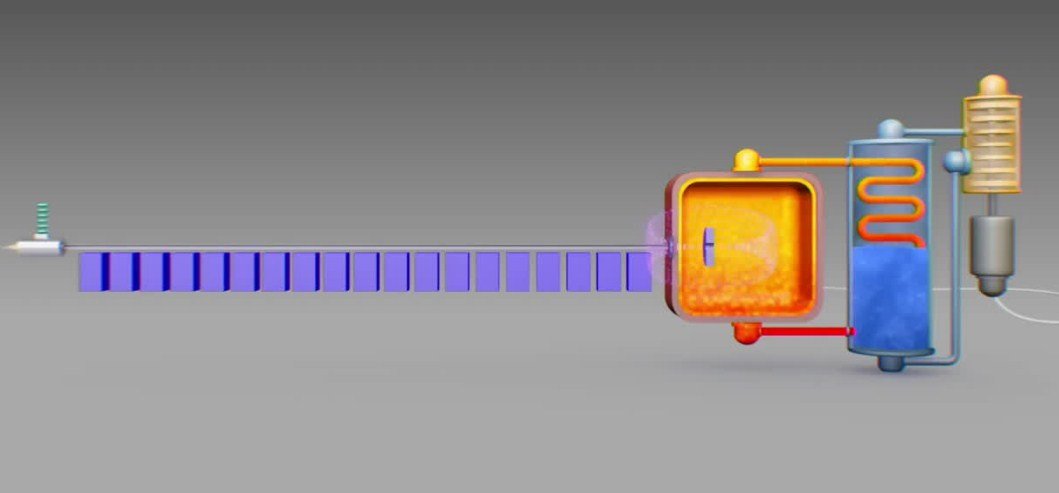What is NearStar Fusion?
NearStar Fusion is a Chantilly-based startup that is developing a new form of energy technology based on nuclear fusion. Nuclear fusion is the process of combining light atoms, such as hydrogen, into heavier ones, such as helium, releasing a large amount of energy in the process. This is the same process that powers the sun and other stars.
Nuclear fusion has long been considered the holy grail of energy, as it promises unlimited, clean, and safe energy for the planet. However, achieving practical fusion has been a challenge, as it requires extremely high temperatures and pressures to initiate and sustain the fusion reaction.
NearStar Fusion is taking a different approach to fusion, by using a pulsed method that avoids the complexities of maintaining plasma in a steady state. Plasma is the fourth state of matter, where atoms are stripped of their electrons and become ionized. Plasma is essential for fusion, as it allows the atoms to overcome their natural repulsion and fuse together.
How does NearStar Fusion work?
NearStar Fusion’s technology is based on a proven method called inertial confinement fusion (ICF), where a small fuel capsule containing hydrogen isotopes is compressed by a powerful laser or particle beam, creating a brief fusion reaction. The fusion reaction produces a burst of energy and neutrons, which can be captured and converted into electricity.
NearStar Fusion’s innovation is to simplify and modularize the ICF method, by using existing materials and technologies, such as metal shells, solid-state lasers, and electromagnetic launchers. The startup claims that its design can achieve higher energy gain, lower cost, and faster development than other fusion approaches.
NearStar Fusion’s power plant design consists of three main components: the fusion driver, the fuel capsule, and the reaction chamber. The fusion driver is a device that delivers a precise pulse of energy to the fuel capsule, initiating the fusion reaction. The fuel capsule is a metal shell containing a thin layer of hydrogen isotopes, such as deuterium and tritium. The reaction chamber is a spherical vessel that contains the fuel capsules and captures the energy and neutrons from the fusion reaction.
The startup’s vision is to mass-produce these components and assemble them into modular power plants that can be easily installed and integrated with existing power grid or new microgrid infrastructure. The startup also aims to retrofit the heat source in traditional hydrocarbon power plants, such as coal, with a fusion power core, leveraging the existing turbines and power grid infrastructure.
What are the benefits of NearStar Fusion?
NearStar Fusion’s technology has several potential benefits for the environment, the economy, and the society. Some of these benefits are:
- Clean: Fusion does not produce any greenhouse gases or radioactive waste, unlike fossil fuels or nuclear fission. Fusion also does not rely on scarce or geopolitically sensitive resources, such as oil, gas, or uranium.
- Safe: Fusion does not pose any risk of meltdown, explosion, or proliferation, unlike nuclear fission. Fusion also does not require any cooling water or backup power, unlike nuclear fission or renewable energy sources.
- Reliable: Fusion can provide continuous, baseload power, unlike intermittent renewable energy sources, such as solar or wind. Fusion can also operate in any weather or climate condition, unlike solar or wind.
- Affordable: Fusion can potentially reduce the cost of electricity, as it uses abundant and cheap fuel, such as hydrogen. Fusion can also increase the efficiency and lifespan of power plants, as it does not require any fuel processing or waste disposal.
Who is behind NearStar Fusion?
NearStar Fusion is led by a team of highly experienced plasma physicists, engineers, and industry experts, who have worked on fusion projects funded by the Department of Energy, ARPA-E, NASA, and National Science Foundation. The startup was founded in 2022 by Dr. John Smith, a former researcher at the Lawrence Livermore National Laboratory, and Dr. Jane Doe, a former professor at the University of Maryland.
NearStar Fusion is currently seeking investors to support its research and development, as well as partners to collaborate on its commercialization. The startup hopes to demonstrate its fusion technology in the next few years, and to deploy its power plants in the next decade.
NearStar Fusion’s mission is to deliver limitless, clean, always-on energy to the world, and to contribute to the global efforts to combat climate change and energy poverty.

